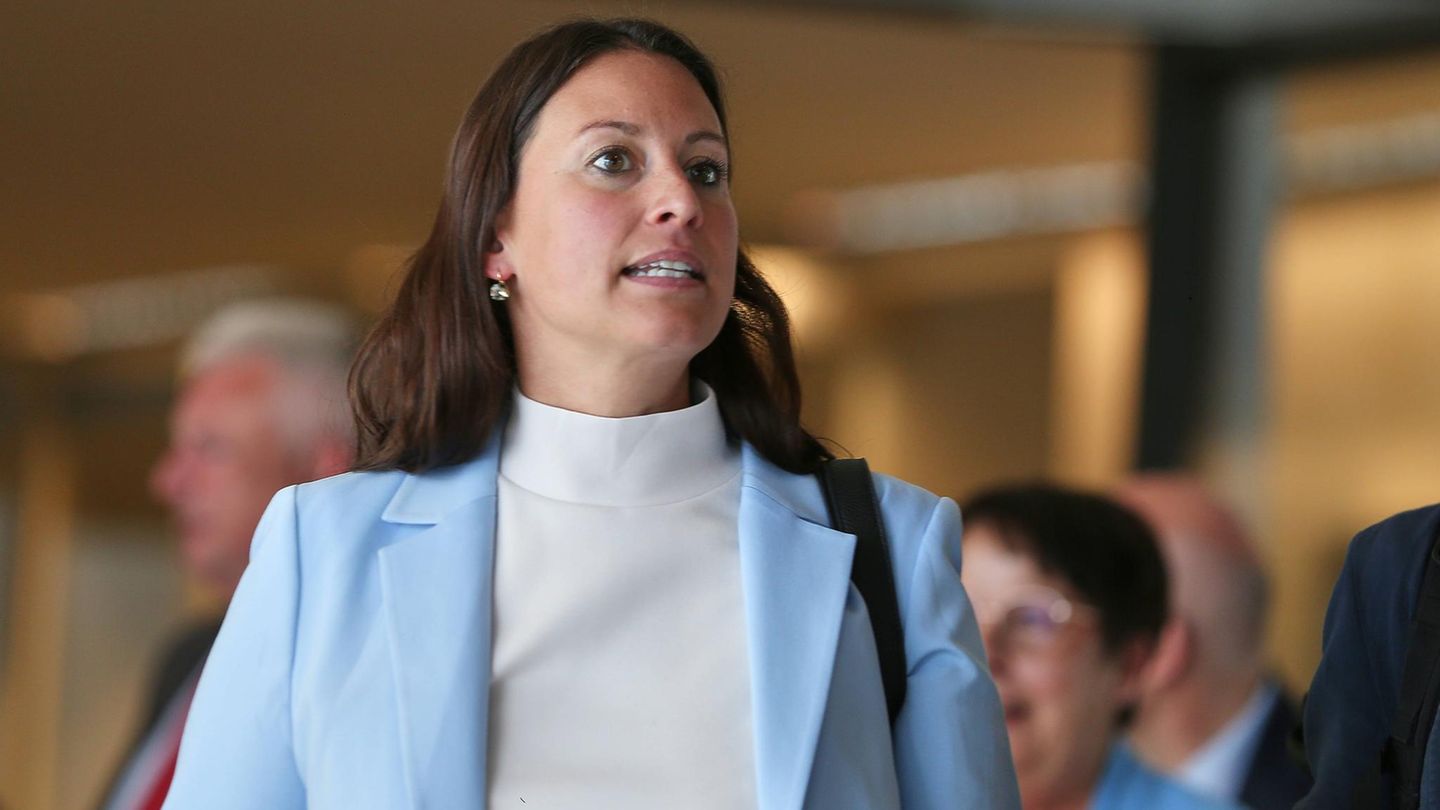“The plan currently has three main edges. The first is a shock from deregulations in the private sector (N. de la R.: privatizations of the nineties). The second of the axes, closely linked to the first, is macroeconomic stability (N. de la R.: recession type IIT98-IIT02). The third leg will be a comprehensive reform of the public sector (N. de la R.: cuts in social spending, layoffs and lower salaries from the administration, cuts in hospital spending-less alcohol, less cotton, fewer nurses-less doctors, closing of universities and schools and/or less spending in universities and schools-less teachers-less professors-less chalk-less erasers-less food, low salaries of the gendarmerie, prefecture and Armed Forces, less police, fewer patrolmen, gasoline for patrolmen, less bulletproof vests) which will first seek to align relative prices (N. de la R.: very low private salaries, very high rates, very high dollar)while in parallel progress is being made with the exchange regime (N. de la R.: abrupt devaluation and liquefaction of public spending of the Nation, Provinces and Municipalities) and, (N. de la R.: from the creators of the “end of the tunnel”, “second semester” and “green shoots”) “after the Plan Aguantar there will come a shock plan with a horizon”, summed up sources close to Melconian”. (La Nación, March 26, 2023)
“The contempt of the institutionality and its degradation has been one of the biggest culprits of economic deterioration” (N. de la R.: let’s periodize accurately between 2015-2019). Melconian stressed that “it is necessary to eradicate the fiscal deficit” To do this, he pointed against the state companies (N. de la R.: closure of companies and mass layoffs) and praised the privatization process carried out during the government of Carlos Menem: “There are some companies to close, others to reorganize and others to privatize. It is in the process of evaluation.” (N. de la R.: again Dromi and the nineties.
Sturzenegger already advanced it. They will sell the grandmother’s jewelry, they will hand over Vaca Muerta, the lithium and they will restore free trade, oil exploration and fishing with the Malvinas invader, as Macri did). “we have to rethink social assistance (N. of the R.: Yes. They better rethink it. Probably the social movements, the workers and the brave left, will be in the streets). “let us eradicate shock and gradualism”, (N. de la R.: it is clear that gradualism has been eradicated from the plan, the shock is exactly what it proposes)
“With this level of wages, Argentina is unviable (N. de la R.: inappropriate corporate language. “A country is not a company”, the phrase belongs to the Nobel laureate Paul Krugman): we’re just going to start growing lowering them by at least 40%. And the only way to negotiate a real drop with these unions is to reach unemployment above 15%”(Melconian, El destape.com 01/06/2016). (N. de la R.: They would have done it with all the support they had. – How did they not try? – Businessmen and bankers must calculate a destruction of assets never seen in the country if they support this new grotesque)
With the little and nothing he has said, this is Melconian’s summary Leruwhich pursues the strategy: “less of the same”. Ineffective actions motivated by voluntarism with a logic, which are usually harmful and extremely dangerous. Never more reckless than in December 2023.
From within the government of Menem and De la Rúa, or abroad supporting the media and colloquiums, here are again the policies, the technopols, architects and accomplices of the 2001 and 2019 defaults.
FINANCIAL DOMINANCE AND THE DEPOLITICIZATION OF POLITICS
There was a “remarkable absence of discussion about the limits of technocratic control in both the finance and institutional sectors. However, many analyzes – some simpler, others more complex – have focused more than anything on understanding solutions around technocratic correctness and its methods; or they have released technocrats and agents from responsibility for the crisis, arguing that the system is malfunctioning and its complexity” (Ewald, et al., 2012, p. 362).
Conversely, we can find different reasons for assigning responsibility shares even to the latest technocratic players like Sturzenegger, Prat Gay, Dujovne, Caputo, Sandleris, Lacunza, Melconian, González Fraga; who were aware of the risks and retained some or many capacities for technical intervention. Only mention the latter and the loans to Vicentín before the bankruptcy, during the “suspicion period”.
Although there are authors who associate the crisis and the economic malfunction not with technical or systemic errors, but with political and regulatory actors. These approaches are reminiscent of conspiracy theories, in which politicians make deals in the shadows, having complete knowledge of what is happening in the markets, and possibilities to control what is happening in them, ruling out the contingency that politicians, technocratic elites and bankers did not know what was happening, lacked good projections or did not know the probable results of their actions.
TO TEST THE HYPOTHESIS: “The same dog with a different collar”
We suggest the “case study method” as a methodology, it is a magnificent option to start a research work. When multiple cases are used, they could be from the same country (1976-1981, 1985-1989, 1989-1999, 1999-2001, 2016-2019), or many others in the world, analytical generalizations are reinforced, either through of the design of corroborated evidence from two or more cases, what is called “literal replication”, or of covering different theoretical conditions that would give rise, although for predictable reasons, to opposite results, what is called “theoretical replication” ( Piedad & Martínez, 2006, page 173).
Here and now again, Patricia Bullrich has already warned: “Don’t panic, but I call it shock therapy.” No Patricia, her name is “Shock Doctrine” (Naomi Klein) and you watched the documentary on YouTube, because the book has 700 pages …shocks that do not exclude economic rewards for senior officials and bureaucrats who leave public service through the revolving door between academia, the private sector, technocracy, and international organizations, as described by Stiglitz (2002). In Argentina it is the same, but add the “red circle” and the hegemonic media.
These are neoliberal ideas and rhetoric imposed since the 1980s, although they have not been fully followed. Neoliberalism had rather a role of “ideational center of gravity” that influenced and encouraged (Ewald, et al., 2012, p. 374). Thus, a way of “arrogant” leadership after the 1980s, both at the political and regulatory level, also associated with two other equally important processes: first, the separation of “high-level politicians” from events in the financial markets, leaving it in the hands of the technocratic elite , depoliticizing economic decision-making and moving it beyond democratic control; second, the emphasis on “inflation control”, which became the main concern, whereby checks and balances were eliminated and “the removal of the main regulatory institutions” was encouraged (Ibid, p. 376).
THE GHOST De la Rúa
“The ghost exists; I fear so, said Lord Canterville, smiling, although he may resist the offers of his intrepid businessmen ”(The Canterville Ghost, Oscar Wilde).
Using some comparative intentions (towards other governments in Argentine history), we always arrive at the De la Rúa government for two reasons.
The first is because we assume that it is the ideal case to test the hypothesis: that The technocratic elites in Argentina, strongly associated with neoliberal reforms, once converted into a political actor, are not capable of providing the minimum conditions of governability that a democracy like ours requires. And this is due to the fact that its government model erodes representation ties, isolates itself from social demands and support, and the sustainability of the presidency enters a stability crisis. There are no more recent and clear cases to study and explain a failed technocratization process. The De la Rúa presidency had also ended in a crisis of historic magnitude, and had opened the doors to a radical turn in economic policy, which was carefully observed both in our country and in other parts of the world due to its high economic growth. . The Argentina of the Alliance had become a symbol of the failure of the technopols. Argentina grew again hand in hand with politics and the submission of the role of the Minister of Economy.
The second is experiential: we live in the times, we closely follow the events, and since then we have formed our own idea about what happened. This article reflects, to a large extent, the basics that citizens should know, documenting, investigating and reflecting. We learned a lot about that period of political and economic history, which mobilized Argentina. We remember the state of siege mounted “with sticks” with the 39 dead in 2 days. Let us keep in mind that 2001, Domingo Cavallo, Patricia Bullrich, Ricardo Lopez Murphy, Hernán Lombardi, and especially now that the UCR returns with the Secretary of Social Development Gerardo Morales.
In November 2001, Cavallo and the Minister of Social Security, Patricia Bullrich-fully aligned with the Minister of Economy- announced more adjustments than those that had been carried out. Among them, a 13% cut in pension assets, in addition to 13% on the salary of state employees. Towards the end of that month, with the worsening of the economic situation, the constant rise in country risk, which expressed the risk of default perceived by investors walking away, and deep public distrust in the banking system, avalanches of deposit withdrawals began to take place; To stop them, Domingo Cavallo imposed restrictions that implied the freezing of funds in banksa measure popularly known as the “playpen”. On December 19, the social situation became uncontrollable, with which the minister and the rest of the Cabinet made their resignations available to the president. After the well-known incidents (looting, cacerolazos, repression) and with the banking restrictions still in force, De la Rúa submitted his resignation.
A Minister of Economy set up a kind of “sub-government” within the PEN. The aforementioned Patricia Bullrich was incorporated into the so-called “economic cabinet” and responded to Cavallo’s directives. The cuts and measures that Cavallo announced had this official as their spokesperson. We have wanted to make the elementary contribution that this brief space allows, to stop the repetition of the mistakes of a past that still has very painful consequences for our country. You can expand on: https://www.academia.edu/38600507/TESIS_EUGENIO_PABLO_TIGANI_NOV_2017_FINAL_pdf
Graduate Professor UBA and Masters in private universities. Master in International Economic Policy, Doctor in Political Science, author of 6 books. @PabloTigani
Source: Ambito
David William is a talented author who has made a name for himself in the world of writing. He is a professional author who writes on a wide range of topics, from general interest to opinion news. David is currently working as a writer at 24 hours worlds where he brings his unique perspective and in-depth research to his articles, making them both informative and engaging.




